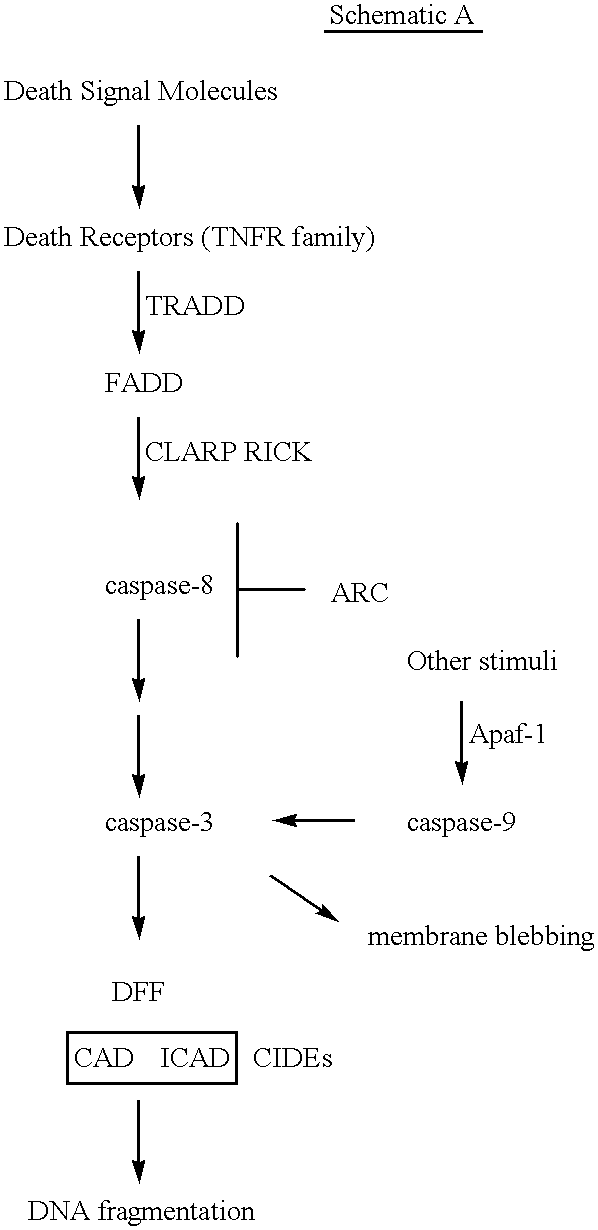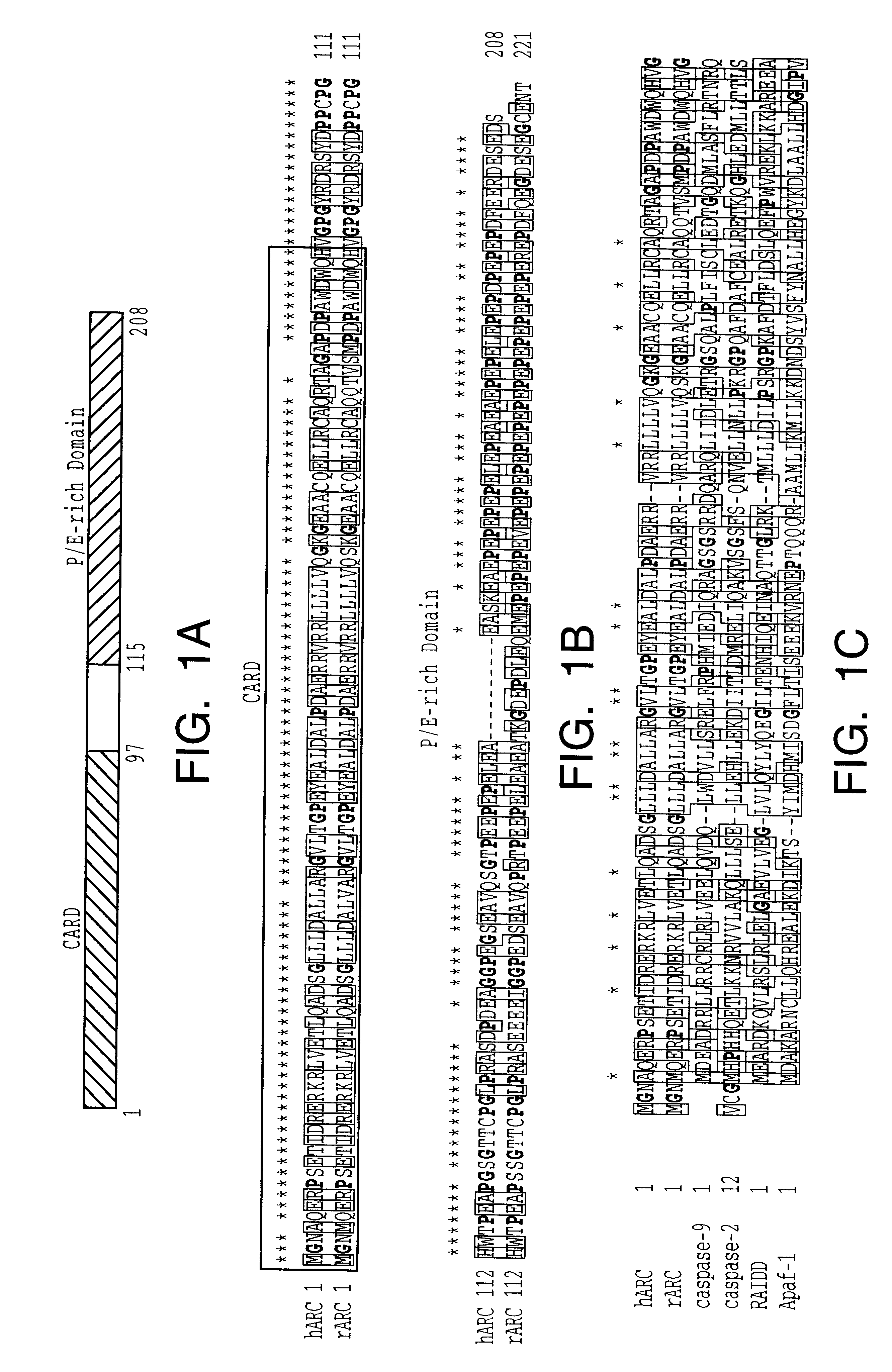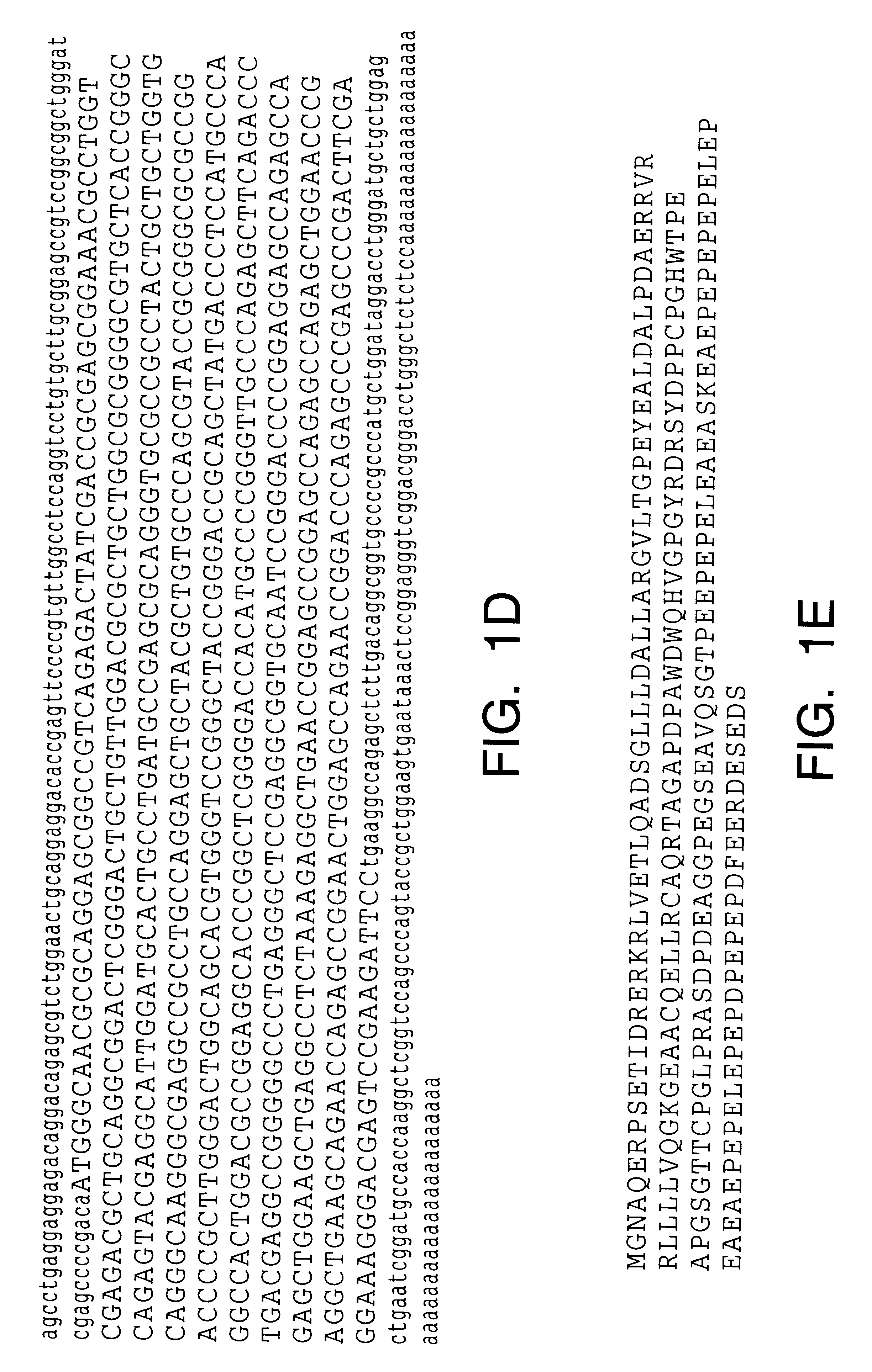Compositions and methods for identifying apoptosis signaling pathway inhibitors and activators
a signaling pathway and inhibitor technology, applied in the field of compositions and methods for identifying apoptosis signaling pathway inhibitors and activators, can solve the problems of dna fragmentation and apoptosis, unable to fully determine the cellular signaling transduction mechanism, and mutants with altered death domains that cannot bind fas, so as to inhibit the enzymatic activity of caspase-8 and attenuate apoptosis
- Summary
- Abstract
- Description
- Claims
- Application Information
AI Technical Summary
Benefits of technology
Problems solved by technology
Method used
Image
Examples
example 1
In this example, the identification of ARC, a human protein with homology to the pro-domains of caspases and Apaf-1 is described. To identify novel apoptosis-regulatory proteins, the GenBank data base was screened for cDNAs encoding proteins with homology to the CARD of caspase-9 (amino acid residues 1-80) by computer homology search. Several human expressed-sequence tags (ESTs) containing overlapping nucleotide sequences with significant amino acid homology to caspase-9 were identified. The longest CDNA (EST clone 322821) was 1.0 Kb, and its nucleotide sequence revealed an open reading frame that encoded a protein of 208 amino acids with a predicted relative molecular mass of 22,629 (See FIG. 1A). This human protein was designated as ARC (poptosis epressor with CARD). The amino acid sequence of human ARC was highly homologous (82% identical) to a predicted 221 amino acid rat protein of unknown function whose cDNA was identified through a screening for proteins containing glutamate-...
example 2
In this example, the expression of human ARC in skeletal muscle and heart tissue is described. Northern blot analysis was performed to assess the expression of arc mRNA in various human tissues. Hybridization with an ARC probe showed two transcripts of approximately 5.5 Kb and 1.0 Kb in skeletal muscle and heart but not in brain, placenta, lung, liver, kidney, pancreas or various lymphoid-hematopoietic tissues (See FIG. 2). The 1.0 kb transcript represented the CDNA analyzed in the experiments of the present invention. The 5.5 Kb mRNA transcript may represent a RNA form of ARC derived by alternative splicing, usage of an alternative poly adenylation sites or cross-hybridization of the probe with sequences of a related gene.
example 3
In this example, experiments are described that demonstrate overexpression of ARC inhibits apoptosis induced by caspases as well as that mediated by stimulation of death receptor pathways. In addition, this example shows ARC suppresses apoptosis, by inhibiting the enzymatic activity of caspase-8.
To elucidate the physiological function of ARC, an expression construct producing ARC was introduced into human kidney epithelial 293T cells and subsequently observed for features of apoptosis. Expression of ARC did not induce apoptosis of 293T cells (data not shown). Because the N-terminal region of ARC exhibited homology to the prodomains of several apical caspases, it was reasoned that ARC might regulate the killing activity of caspases. To test that, plasmids producing several caspases known to activate cell death were co-expressed with ARC in 293T cells. Expression of ARC inhibited apoptosis induced by caspase-8 and C. elegans CED-3 (p<0.01) but not that mediated by caspase-9 (See FIG. ...
PUM
| Property | Measurement | Unit |
|---|---|---|
| compositions | aaaaa | aaaaa |
| cellular morphology | aaaaa | aaaaa |
| size | aaaaa | aaaaa |
Abstract
Description
Claims
Application Information
 Login to View More
Login to View More - R&D
- Intellectual Property
- Life Sciences
- Materials
- Tech Scout
- Unparalleled Data Quality
- Higher Quality Content
- 60% Fewer Hallucinations
Browse by: Latest US Patents, China's latest patents, Technical Efficacy Thesaurus, Application Domain, Technology Topic, Popular Technical Reports.
© 2025 PatSnap. All rights reserved.Legal|Privacy policy|Modern Slavery Act Transparency Statement|Sitemap|About US| Contact US: help@patsnap.com



